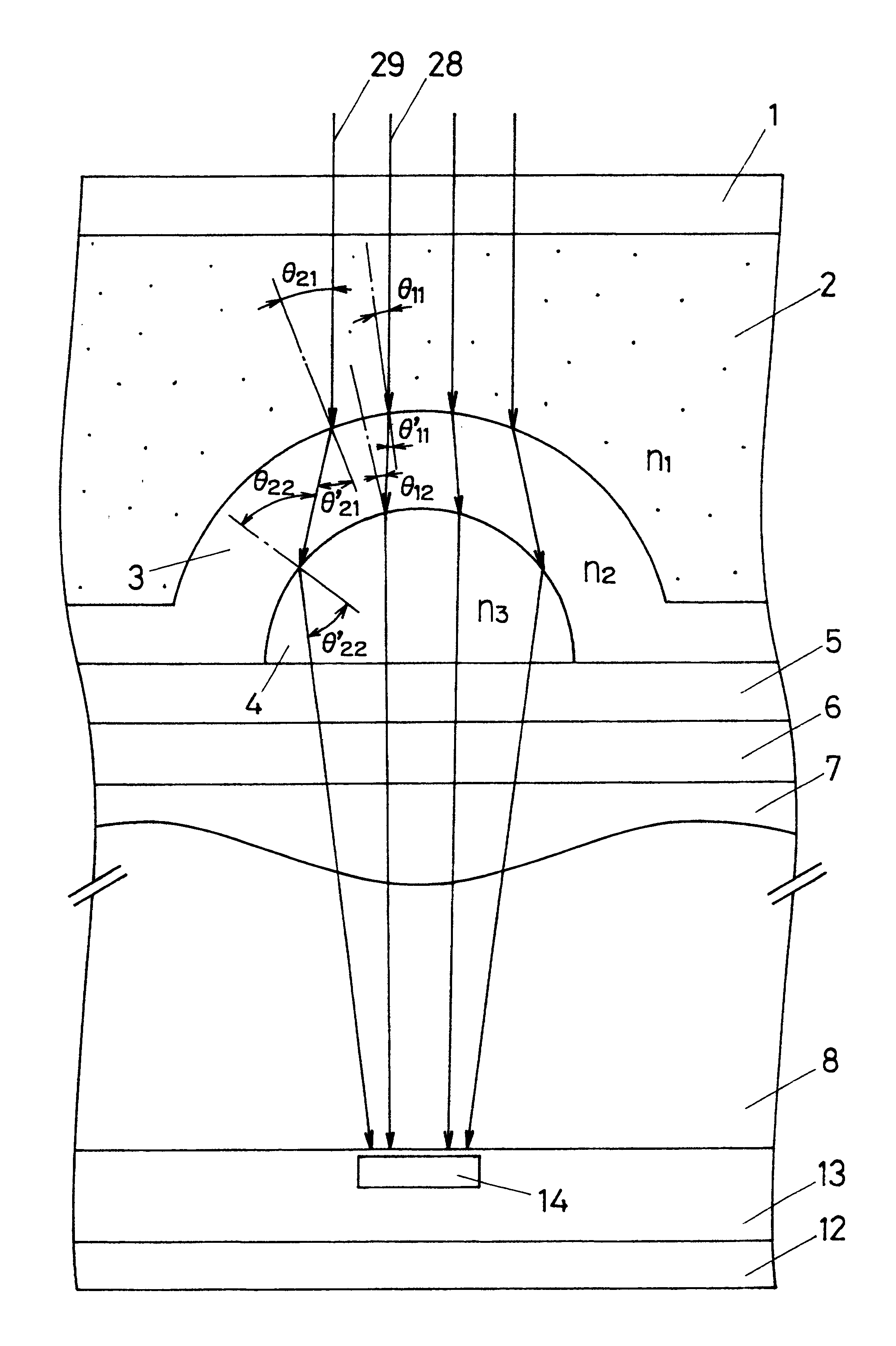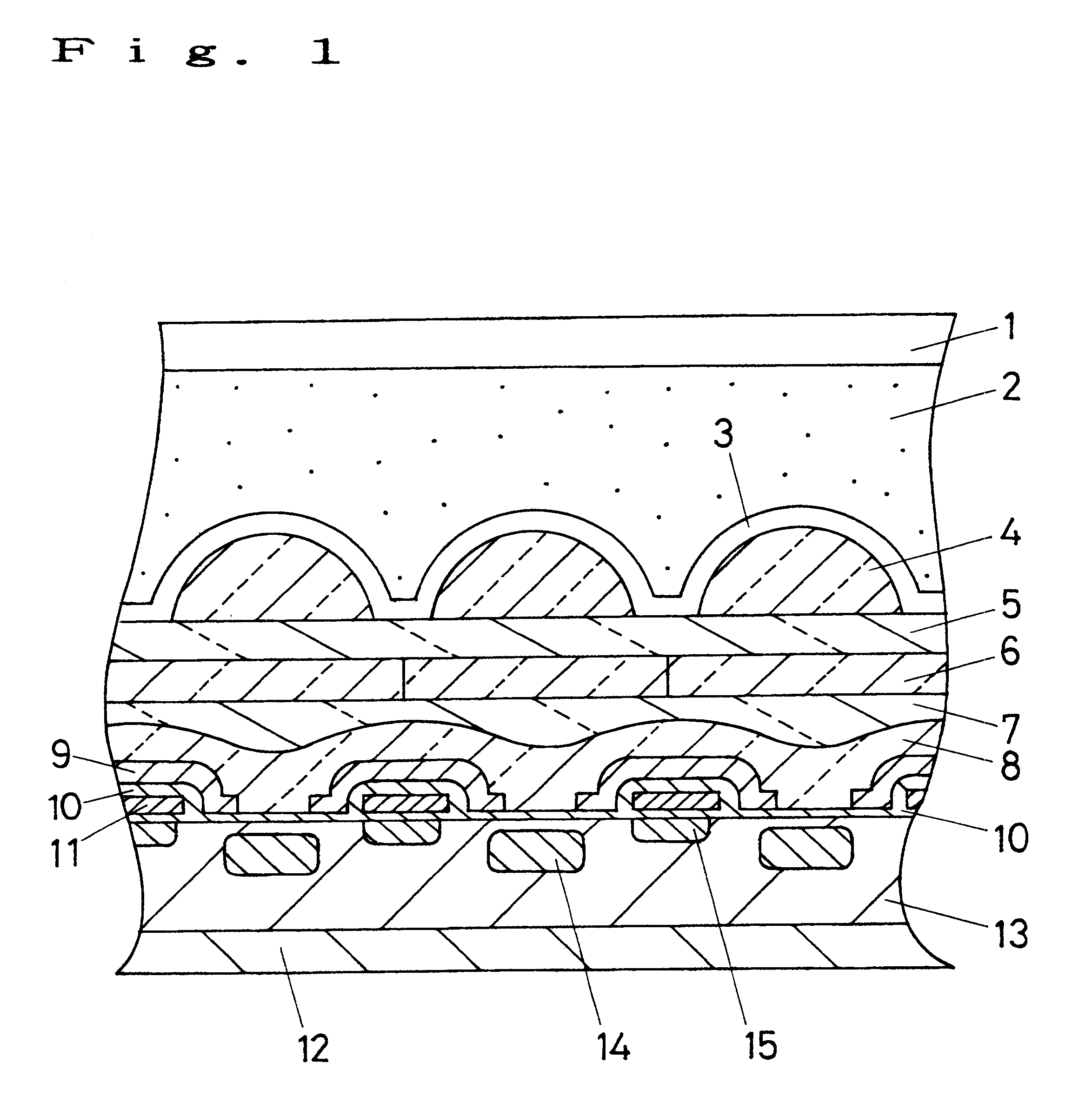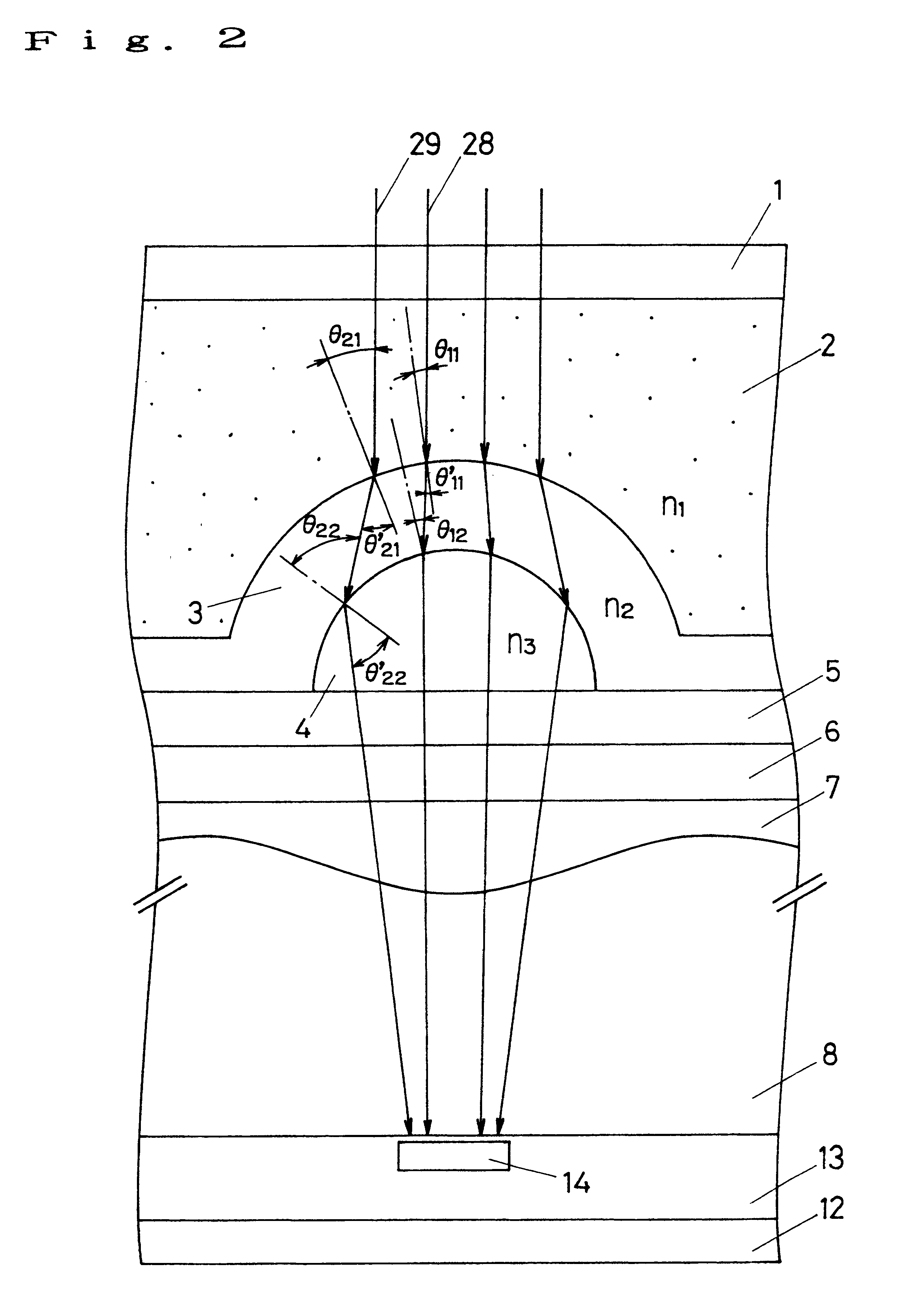Solid-state imaging device
a solid-state imaging and imaging device technology, applied in the direction of radio frequency controlled devices, instruments, lenses, etc., can solve the problems of heat resistance, spectral performance, and inability to completely condensate light reaching the microlens on a photodiode, etc., to achieve the effect of reducing the cost of operation, and improving the quality of operation
- Summary
- Abstract
- Description
- Claims
- Application Information
AI Technical Summary
Problems solved by technology
Method used
Image
Examples
Embodiment Construction
Hereafter, the present invention will be more minutely described in accordance with embodiments. However, the present invention is not restricted to the following embodiments.
First, as shown in FIG. 1, the photodiode 14 serving as a light-receiving portion which is an n-type impurity area is formed in the p-type well layer 13 formed on the surface layer of the n-type semiconductor substrate 12 together with the vertical transfer register 15 and the like through the ion implantation method.
Then, a silicon-oxide film is formed through the thermal oxidation method, moreover a silicon-nitride film is formed on the silicon-oxide film through the chemical vapor deposition method (CVD method) to use the silicon-nitride film as the insulating film 10. Then, a polycrystal-silicon film is formed on the silicon-nitride film (insulating film 10) through the CVD method.
The upper portion of the photodiode 14 of the polycrystal-silicon film is removed through etching and further thermally oxidized...
PUM
 Login to View More
Login to View More Abstract
Description
Claims
Application Information
 Login to View More
Login to View More - R&D
- Intellectual Property
- Life Sciences
- Materials
- Tech Scout
- Unparalleled Data Quality
- Higher Quality Content
- 60% Fewer Hallucinations
Browse by: Latest US Patents, China's latest patents, Technical Efficacy Thesaurus, Application Domain, Technology Topic, Popular Technical Reports.
© 2025 PatSnap. All rights reserved.Legal|Privacy policy|Modern Slavery Act Transparency Statement|Sitemap|About US| Contact US: help@patsnap.com



